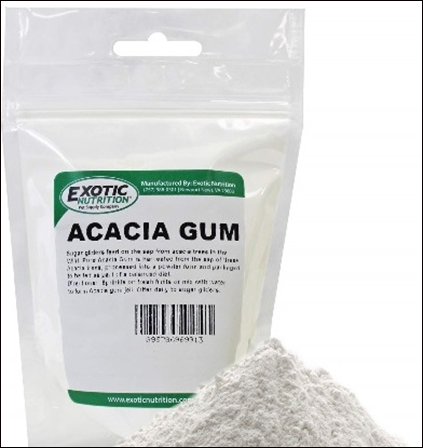Article / Research Article
Advisor Doctor, Baghdad Medical City and Iraqi Ministry of Health, Iraq
Aamir Jalal Al-Mosawi, Head, Iraq Headquarter of Copernicus Scientists International Panel, Iraq
E-mail: almosawiaj@yahoo.com
22 July 2020 ; 8 Aug 2020
The beneficial use of intestinal (dietary) dialysis in patients with chronic renal failure has been increasingly described during the previous two decades.
The cornerstone of the dietary management during intestinal dialysis is protein restriction that is compensated by adequate caloric intake. On the other hand the dietary management of diabetic patients includes calorie restriction that is compensated by adequate intake of proteins. Therefore, the dietary prescription of intestinal dialysis in diabetic patients can be challenging and are not expected to be convenient for many patients. However, a beneficial effect of intestinal in a patient with insulin dependent diabetes mellitus and symptomatic uremia has been reported. The aim of this paper is report a beneficial effect of intestinal dialysis in a diabetic uremic patient who had insulin dependent diabetes mellitus.
A 28-year-old female patient with insulin dependent diabetes mellitus, and symptomatic uremia and refused treatment with dialysis. She had marked weakness and was unable to stand and walk unaided. However, she didn’t have a life threatening uremic complication such as gastrointestinal bleeding or encephalopathy on referral. The patient was treated with intestinal dialysis.
The patient experienced amelioration of symptoms of uremia with improved general wellbeing in association with lowering of urea levels and creatinine during the period of therapy. She was unable to stand and walk unaided before the start of therapy, but she was able to climb more than 10 steps upstairs unaided after three weeks of therapy.
The use of intestinal dialysis in this patient was helpful at least as an interim measure.
The beneficial use of intestinal (dietary) dialysis in patients with chronic renal failure has been increasingly described during the previous two decades. In economically disadvantaged countries other forms of dialysis are not universally affordable or available, and if available are generally associated with experiences that are considered unsatisfactory and unacceptable by many patients. Therefore, management of chronic renal failure in many countries demanded re-pioneering and a ground-breaking innovation based on different, but highly relevant experiences. The main components of intestinal dialysis technology include the conservative (dietary and pharmacologic) interventions of chronic renal failure plus the use of a urea lowering agent which is the soluble fiber “acacia gum” which is digested by colonic flora, and cause a shift of urinary excretion to fecal excretion by modifying the enterhepatic urea cycle and increasing the amount of nitrogen eliminated as fecal waste [1-17].
The cornerstone of the dietary management during intestinal dialysis is protein restriction that is compensated by adequate caloric intake. On the other hand the dietary management of diabetic patients includes calorie restriction that is compensated by adequate intake of proteins. Therefore, the dietary prescription on intestinal dialysis in diabetic patients can be challenging and are not expected to be convenient for many patients [12, 13, 14, 15]. However, a beneficial effect of intestinal in a patient with insulin dependent diabetes mellitus and symptomatic uremia has been reported [16].
The aim of this paper is report a beneficial effect of intestinal dialysis in a diabetic uremic patient who had insulin dependent diabetes mellitus.
A 28-year-old female patient with insulin dependent diabetes mellitus, and symptomatic uremia and refused treatment with dialysis. She had marked weakness and was unable to stand and walk unaided. However, she didn’t have a life threatening uremic complication (e.g. gastrointestinal bleeding, encephalopathy) on referral. She was on low calorie diet and was receiving insulin. Before starting intestinal dialysis treatment, it was necessary to give her intramuscular pyridoxine (100 mg) and oral domperidone to control vomiting.
She was treated with low protein diet (0.5 g/kg with at least 50% of the total intake given as egg albumin), pharmacological measures of chronic renal failure, and powder acacia 25 gm three daily time dissolved in diet Seven Up and taken before meals.
The patient experienced amelioration of symptoms of uremia with improved general wellbeing in association with lowering of urea levels and creatinine during the period of therapy. She was unable to stand and walk unaided before the start of therapy, but she was able to climb more than 10 steps upstairs unaided after three weeks of therapy. Table-1 shows the effect of intestinal dialysis on serum creatinine, blood urea, and blood urea nitrogen.
| Serum creatinine mg/dl | Blood urea mg/dl | Blood urea nitrogen mg/dl | |
|---|---|---|---|
| Start of therapy | 9 | 219 | 97.3 |
| After 3 weeks | 6 | 136 | 60.4 |
| After 5 weeks | 4.3 | 130 | 57.7 |
| After 9 weeks | 3.7 | 114 | 50.7 |
Table 1: The effect of intestinal dialysis on serum creatinine, blood urea, and blood urea nitrogen
Acacia gum is the urea lowering agent used during intestinal dialysis, and it lowers urea level by increasing fecal excretion. Acacia gum is the dried gummy of stem and branches of acacia trees (Senegal family leguminosae) and various other acacia trees. Figure-1 shows acacia gum tree and raw acacia gum.

Figure-1: Acacia gum tree and raw acacia gum
Acacia gum is a complex polysaccharide consists mainly of calcium salts of polyarabic acid, but also contains magnesium and potassium ions. Its high molecular weight polysaccharide molecule contains d-galactopyranose, d-glucuronic acid, l-rhamnopyranose and l-arabofuranose. On hydrolysis acacia yields hexoses, arabinose, galactose, rhamnose, and glucuronic acid. Acacia gum is generally recognized as safe by the US drug and food administration. Acacia gum is widely used in the production of foods such as puddings, frostings, candy, beverages, and chew gum. It has demulcent properties and often added to medicines for that purpose.
Acacia gum is completely degraded in the colon. The energy value acacia is 14.7+/- 0.5 kJ/g, lower than the energy value of starch 17.4 +/- 0.4. Acacia gum administered to men for 3 weeks has no effect on glucose tolerance, but decreases serum cholesterol [10-15]. Figure-2 shows powder acacia gum which is used in intestinal dialysis.

Figure 2: Powder acacia gum which is used in intestinal dialysis
The cornerstone of the dietary management during intestinal dialysis is protein restriction that is compensated by adequate caloric intake. On the other hand the dietary management of diabetic patients includes calorie restriction that is compensated by adequate intake of proteins. Therefore, the dietary prescription on intestinal dialysis in diabetic patients can be challenging and are not expected to be convenient for many patients [12, 13, 14, 15]. There are no limitations to the use of acacia gum as a food additive. Oral ingestion of acacia is generally not associated with a change in blood glucose [18].
A useful practical dietary management guide for intestinal dialysis has been described. Protein [12, 13, 14, 15, 17]. Protein restriction can simply be performed by restricting meats, poultry, fish, milk, cheese, and yogurt. Figure-3 shows a low protein palatable breakfast for non-diabetic patients. It may include eggs (fried, boiled or half boiled), cream or butter, honey or jam, bread, dairy free tea or coffee, and vegetable or fruit juice.
For diabetic patients who need to avoid cream, butter, honey and jam, alternative low protein-low sugar options for breakfast include a Middle Eastern dish of thyme, olive oil, olive, and thyme pastry (Figure-4).

Figure 3: A low protein palatable breakfast for non-diabetic patients may include eggs (fried, boiled or half boiled), cream or butter, honey or jam, bread, dairy free tea or coffee, and vegetable or fruit juice

Figure 4: Alternative low protein-low sugar options for breakfast include a Middle Eastern dish of thyme, olive oil, olive, and thyme pastry
While High protein vegetables and legumes such beans, peas, chickpeas lentil should be totally restricted, many of the low protein vegetables such eggplant, zucchini, squash, and cabbage are useful in making broths and stews that with rice or bread can help in making low protein palatable lunch and dinner for diabetic and non-diabetic patients. Examples of low protein meal that can be taken at lunch and dinner include zucchini or eggplant broths with rice and fried eggplant with or without other fried vegetable like tomato, onion, and bell pepper (Figure-5).

Figure 5: Examples of low protein meal that can be taken at lunch and dinner include zucchini or eggplant broths with rice and fried eggplant with or without other fried vegetable like tomato, onion, and bell pepper
Low protein vegetables such as tomato, bell peppers, cucumbers, onions, olive, lettuce, celery, leek, basil and carrots are useful in making salads which supplement breakfast, lunch, and dinner and contributing to making theses meals more healthy and minimizing the intake of protein. Low protein nuts especially chestnut and coconut can also be used as snacks or to supplement the three daily meals and also help in minimizing protein intake in diabetic and non diabetic patients [12, 13, 14, 15, 17].
The use of intestinal dialysis in this patient was helpful at least as an interim measure.
The figures were used in previous author’s publication and he has their copyrights.
Conflict of interests: None
- Al-Mosawi AJ (2002) The challenge of chronic renal failure in the developing world: Possible use of acacia gum. Pediatr Nephrol 17(5):390-1. Doi: 10.1007/s00467-001-0755-4. PMID: 12042902.
- Al-Mosawi AJ (2004) Acacia gum supplementation of a low-protein diet in children with end-stage renal disease. Pediatr Nephrol 19(10):1156-9. Doi: 10.1007/s00467-004-1562-5. PMID: 15293039.
- Al-Mosawi AJ (2007) The use of acacia gum in end stage renal failure. J Trop Pediatr 53(5):362-5. Doi: 10.1093/tropej/fmm033. PMID: 17517814.
- Al-Mosawi AJ (2009) Six-year dialysis freedom in end-stage renal disease. Clin Exp Nephrol 13(5):494-500. Doi: 10.1007/s10157-009-0181-7. PMID: 19479191.
- Al-Mosawi AJ (2006) Continuous renal replacement in the developing world: Is there any alternative. Therapy (Clinical practice) 3(2): 265-272. Doi: 10.2217/14750708.3.2.265
- Al-Mosawi AJ (2008) Chronic renal failure in Iraqi children: 14 year experience of a single center. Journal of Nephrology and Renal Transplantation (JNRT) 1(1): 32-40. Doi: 10.5281/zenodo.3875727
- Al-Mosawi AJ (2008) The management of childhood chronic renal failure in the developing world. Section on international child health: American Academy of Pediatrics Newsletter. 17-19. Doi: 10.5281/zenodo.3878876
- Al-Mosawi AJ (2019) Dietary dialysis with acacia gum: Intestinal dialysis technology. Advancements in Journal of Urology and Nephrology 2(1): 1-8. Doi.org/10.33140/AJUN.01.01.05
- Al-Mosawi AJ (2020) A new dietary therapy for chronic renal failure: Intestinal dialysis technology. Journal of Medical and Surgical Urology 1(1): 8-16. Doi: 10.5281/zenodo.3878418
- Al-Mosawi AJ (2013) A new dietary therapy for chronic renal failure. 1st ed., Saarbrücken; LAP Lambert Academic Publishing. (ISBN: 978-3-659-51436-4). Doi 10.13140/rg.2.1.4319.2080
- Al-Mosawi AJ (2017) Advances of peritoneal dialysis in the developing world: Combined intermittent peritoneal dialysis and intestinal dialysis (Chapter 3). In Marcia Bell, Ed, Peritoneal Dialysis: Practices, Complications and Outcomes. Nova Science Publisher, New York. ISBN: 978-1-53610-515-5. https://doi.org/10.13140/rg.2.1.4315.1120
- Al-Mosawi AJ (2020) Intestinal dietary dialysis: A practical treatment guide. 1st ed., Saarbrücken; LAP Lambert Academic Publishing. (ISBN: 978-3-659-87697-4).
- Al-Mosawi AJ. Intestinale diätetische Dialyse: Ein praktischer Behandlungsleitfaden (German edition). Verlag Unser Vissen (ISBN: 978-620-2-59519-3).
- Al-Mosawi AJ (2020) La dialyse intestinale alimentaire: Un guide pratique de traitement (French edition). Editions Notre Savoir. (ISBN-978-620-2-59521-6).
- Al-Mosawi AJ (2020) Dialisi dietetica intestinale: Una guida pratica al trattamento (Italian edition). Edzioni Sapienza. (ISBN: 978-620-2-59522-3)
- Al-Mosawi AJ (2006) Continuous renal replacement in the developing world: Is there any alternative. Therapy (Clinical practice) 3(2): 265-272. Doi: 10.2217/14750708.3.2.265
- Al-Mosawi AJ (2020) Intestinal (dietary) dialysis: A practical nutritional guide. Journal of Urology and research 7 (1): 1118 [1-3].
- Al-Mosawi AJ (2006) Acacia gum therapeutic potential: Possible role in the management of uremia: a new potential medicine. Therapy (Clinical practice) 3(2) 301-321.













